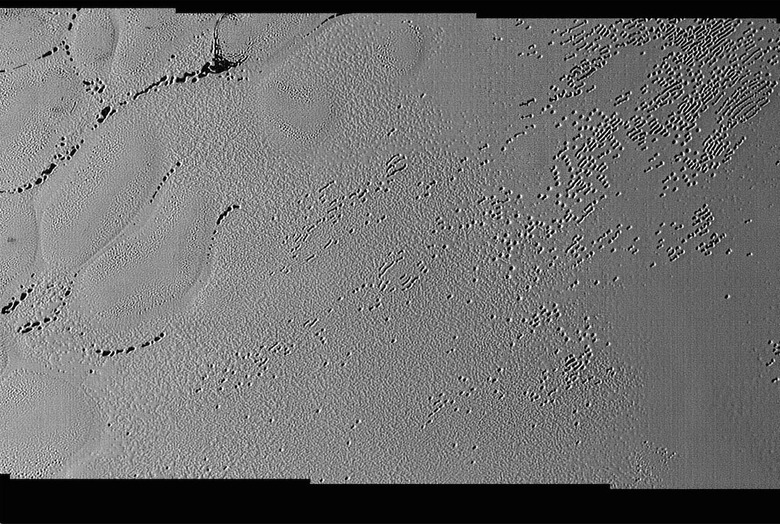Pluto Has Pits Likely Made By Ice
It's no secret that Pluto has ice across its face, appearing with more than a couple bits of proof since NASA's closest approach earlier this year. NASA mission New Horizons sought out the surface of this planet-like space body, coming near enough that they're now presenting photos that are about 130 miles (210 kilometers) across. The image we're seeing today shows a collection of small pits and troughs, created – more than likely – by icy liquids, forming solidly then evaporating away over time.
According to NASA, New Horizons scientists have been just as surprised as we've been with the large amount of "variety and complexity" in the surface of Pluto. What once was a distant, gray sphere is now a planet we can see up close, and personal – mountains and flat plains and pits included.
Explore our New Horizons tag portal for more Pluto data and imagery!
Many of these pits are hundreds of meters across and tens of meters deep. New Horizons scientists hypothesize that they've been made by solid nitrogen – volatile ices in the area – sublimating then evaporating to form pits of all sizes.
One point that NASA has mentioned several times over the past few weeks is the fact that they've not been able to see any impact craters on the surface of Pluto.
Here in the area of Pluto called (informally) Sputnik Planum you'll find no impact craters of any kind. NASA says that this means the area is extremely young – it'd have to be to have suffered no damage as result of flying chunks of asteroid visible by New Horizons this year.

"Pluto is weird," said Hal Weaver, New Horizons project scientist with Johns Hopkins Applied Physics Laboratory, "in a good way."
"The pits, and the way they're aligned, provide clues about the ice flow and the exchange of volatiles between the surface and atmosphere, and the science team is working hard to understand what physical processes are at play here."
